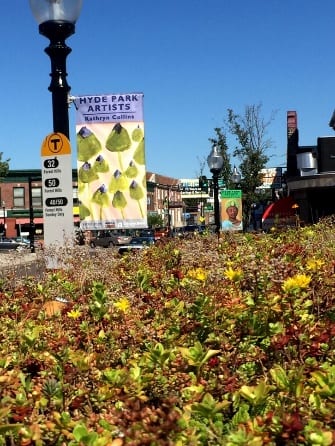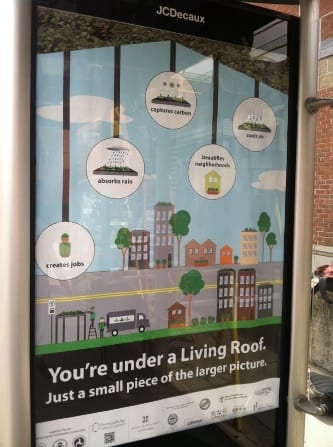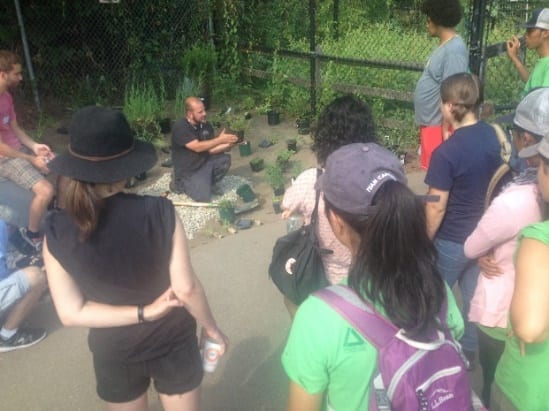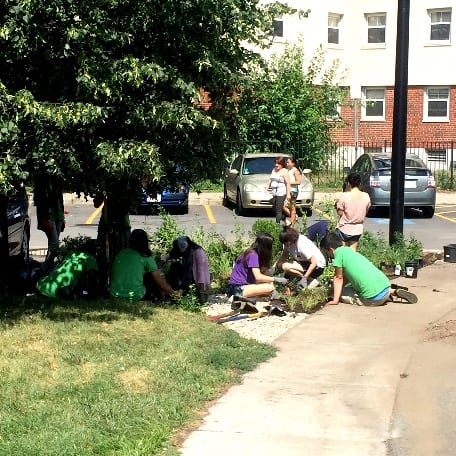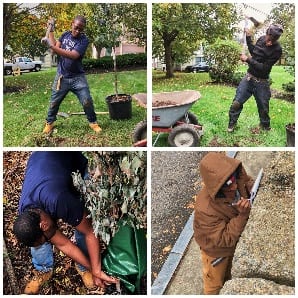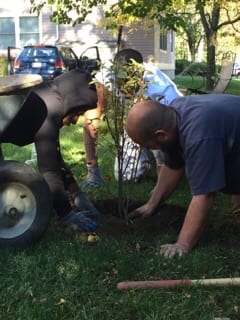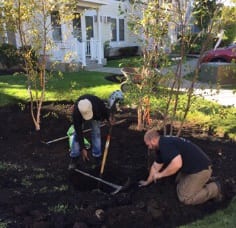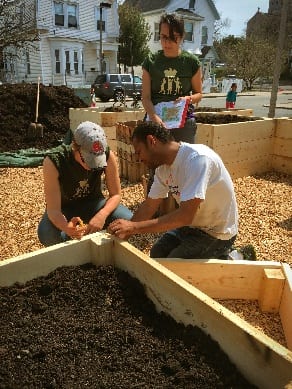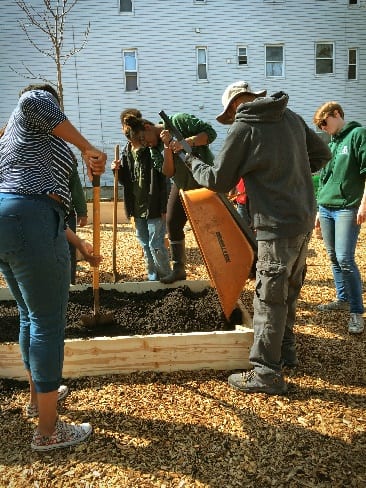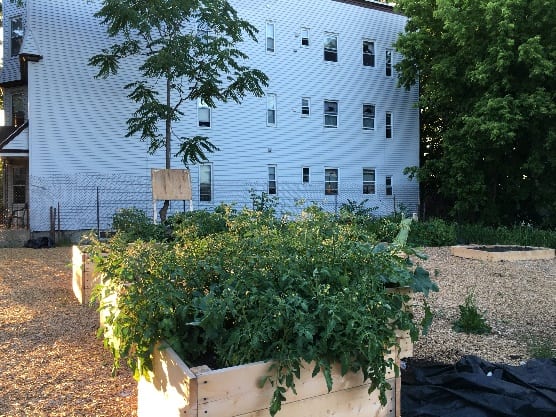by Trevor L. Smith, MCH, AOLCP, LEED GA
sus tain’ a-bil‘-i-ty (noun) Avoidance of depletion of natural resources in order to maintain an ecological balance.
The Problem
The most dangerous phrase ever uttered is “This is the way we’ve always done it.” When I began Land Escapes, the latest and greatest cell phone was the flip phone, people emailed but phone and mail was preferred, and it was good to have a website but not essential. Varieties like Endless Summer Hydrangea and Knockout Roses were just about to hit the market, and N, P, K was all you needed to know about lawn and garden care. Today I have a small computer in my pocket, clients all email but prefer text, and if you don’t have an online presence you may as well not exist. Varieties like Endless Summer Hydrangea and Knockout Roses are everywhere and N, P, K is still all people know about lawn and garden care.
Sustainability isn’t about how much we can “safely” take from the earth, but how much we give back.
During those intervening years, an abundance of information about the importance of native plants and habitat, the amazing world of the soil food web, the dangers and problems with synthetic fertilizers, and stormwater runoff has been propelled to the forefront. Despite these changes many landscape designers and city planners create pretty landscapes, parks, and green spaces installed by landscape or construction crews as if they were putting together IKEA® furniture or painting by numbers. The time for “This is the way we’ve always done it” is over. We can no longer simply landscape for aesthetics and install without understanding. We need to evolve in our approach to the planet as we evolved in the way we communicate and do business. Just as our phones do more, our designs need to do more, and just as we needed to learn how to use those phones, we need to learn to use the emerging technologies especially when it comes to Green Infrastructure (GI).
The Need
There is a deficit in the landscape industry of well-trained GI professionals. Many landscape companies follow installation instructions and specifications without a true understanding of how these systems actually work and why they are now being standardized by various government and municipal agencies. There are few resources available for GI-specific training; we need projects that will help bring awareness and hands-on training to this relatively new industry if we plan to have a skilled workforce in the future. We can no longer environmentally afford to look at and treat the landscape as a canvas; landscapes, parks and greenspaces must do more than look nice. Every design needs to address planet and people. To address the planet means to make choices that consider the soil, water, plant species, and the impact on wildlife such as birds and pollinators. To address the people means to look beyond the factors of space and use and to make choices that consider health, education, enjoyment, and functionality
The Solution
Architects, planners, and designers must ask more from their designs. Each project, no matter how small, should address as many environmental and human issues as possible. For example, a project could call for fifty street trees to be planted. Instead of putting in a standard tree pit, where the trees life expectancy is five to seven years due to improper planting, compaction of the base and neglect, what if we asked for more? What if the plan was to plant the tree properly in combination with a stormwater catchment system? Knowing compaction is a problem, why not protect the base of the pit with a permeable material to prevent compaction and to allow maximum water infiltration? What if a maintenance plan was designed from the beginning to ensure that the tree lived its full lifespan, providing generations of enjoyment and benefits?
That would be pretty awesome right? But what if we took it a step further and used the tree planting and establishment period as a GI training opportunity? Then we would have a group of entry-level workers (maybe from second chance or skills programs) who learn how to plant the trees and install the stormwater catchment system properly. They could maintain the trees for the first year in conjunction with a basic horticulture class. Then we would have a group of properly trained individuals with an understanding of the benefits of street trees, including their role in the urban landscape and in stormwater management, ready to be hired.
Once we start asking more from our designs and calling on ourselves to do more and go further we will be amazed at how powerful even the smallest project can be. Moving forward, I believe we need to evaluate each project for four major opportunities.
Maximum Environmental Impact – Have we addressed every environmental opportunity?
Skills training – Can this project be a training opportunity for the future workforce? Is there opportunity to write into the RFP a requirement to use entry level workers or skills programs?
Job Creation – With this project are we creating the need to hire additional personnel or are we creating a demand for new job opportunities, e.g., raingarden or greenroof maintenance companies?
Community Education or Involvement – Wherever there is an opportunity to reach out to the community and explain the project and its intention, that is a moment that needs to be capitalized on. This can be in the form of signage describing the benefits, e.g., “This Is A Rain Garden. It is designed to….” Or in the form of a community meeting or community involvement, e.g., Plant A Pollinator Garden at the Library with the Scouts or a science class.
The more everybody understands, the more inspired and environmentally aware they will become. As we work to become a part of the solution, building and educating in this manner, we will set the standards to secure a healthier, productive future for all.
Case Studies
In the following sections, I outline four small case studies along with their goals to help illustrate this new approach and to demonstrate how easy it is to rewrite the way we do things. The four case studies include The Boston Green Roof Bus Shelter Initiative, The Somerville Raingarden Project, The Upham’s Corner Community Garden, and the Dorchester 100 Tree Initiative. All of these projects were grant-funded and designed to prove the approach described here can work.
Green Roof Bus Shelter Initiative
Objectives
- Prove low-cost, high-impact GI method
- Prove entry level job training opportunity
- Highlight opportunity for underserved communities
- Bring GI to street level to start conversation
Narrative
The Green Roof Bus Shelter Initiative was a trial workforce development program in which the students of Youth Build Boston installed, maintained and monitored 6 green roofs on bus shelters around the city of Boston. The program lasted three years offsetting a combined total of 12,964 gallons of storm water. The roofs were retrofitted onto existing shelters and were planted with a hardy five sedum mix as well as seeded with native flowers. The total soil depth was four inches and the total saturation weight was twelve pounds per square foot. The students visited the shelters once a month to capture data on rainfall, the growth and health of the plants, stormwater runoff, and green roof impact on the heat island effect. This pilot project was coupled with two major community outreach engagements along with a number of smaller projects. The first of the major engagements was a presentation of the program to a group of community leaders, and the second was to a high school science class. Finally, each shelter was fitted with info-posters depicting what was happening on the roof above and the intent of the program.
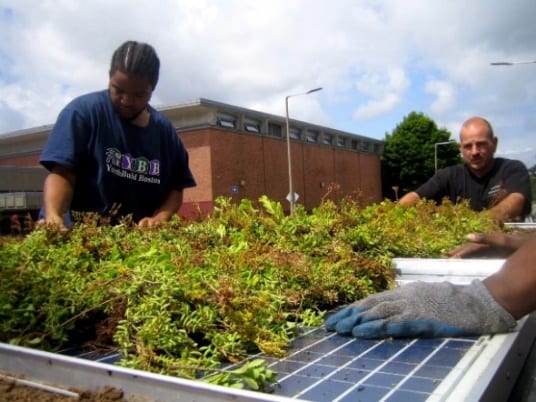
A Youth Build Boston team installs one of the green roofs on top of a bus shelter, with instruction from Trevor Smith.
Somerville Raingarden Project
Objectives
- Prove low-cost, high-impact GI method
- Prove entry level job training opportunity
- Highlight opportunity for underserved communities
- Highlight examples of GI to start conversation
Narrative
The Somerville Raingarden Project installation was a workforce development program in which the youth members of Groundworks Somerville installed and maintained two raingardens. Prior to installation, a presentation outlining the project and the further green job intent was given to the residents of the housing community where the raingardens were being installed and to the members of Groundworks Somerville. Participants were taught the importance and function of a raingarden as well as how to properly site, construct, plant and maintain a raingarden. In addition, they were exposed to basic Green Industry skills such as plant and weed identification.
Dorchester 100 Tree Initiative
Objectives
- Prove low-cost, high-impact GI method
- Prove entry level job training opportunity
- Highlight opportunity for underserved communities
- Bring GI to street level to start conversation
Narrative
During The Dorchester Tree Initiative a group of young men from the Strive organization (a GED job skills training program) spent five weeks planting trees at various housing developments around Dorchester (a neighborhood of Boston). In addition to learning proper tree planting and pruning techniques, the project also included classes in basic tree care and pest/disease identification.
The long-term goal was to teach these young men tree and landscape maintenance so that they could go on to be hired by the property management company as landscape maintenance professionals. The project finished ahead of schedule and under budget so an additional thirteen trees and forty shrubs were planted.
Upham’s Corner Community Garden
Objectives
- Prove positive reclamation of vacant lots,
- Bring healthy local food opportunities to underserved communities
- Involve youth (Boston Food Project) and community in neighborhood improvement
- Highlight examples of GI and start conversation
Narrative
The Upham’s Corner Community Garden was a high community involvement project in which youth members of The Boston Food Project worked to repurpose a vacant lot. With the help of the neighborhood, the site was cleared and capped due to high lead levels in the soil. Raised beds were then constructed and the site was given to the care of the neighborhood. Instead of becoming more housing or remaining a blight in the neighborhood, this lot remained a greenspace and became a community gathering and nourishing space.
Conclusion
The fact is there is a lot of work to be done. To move forward sustainably and to truly, wholly address the environmental challenges we face, we will need to adopt new methods and technologies. To find the solutions, we will need to look at the issue not in the context of the quick fix but at a larger scale. One of the biggest challenges we faced during all of these projects was convincing the decision makers to trust us and to try something that either hadn’t been done before or to try something relatively new with very little supporting data.
Challenges are common when introducing new ideas that involve change. Thomas Edison faced huge push back from the whale oil and gas light lobby, but electric power prevailed. In these four projects, simple low-cost installations led to large impact and much needed GI was implemented addressing planet and people, with the future of the industry in mind. In my presentations, I often say if we install forty raingardens around the city, we have now created the need for raingarden maintenance. Given the opportunity to install and maintain small green roofs on bus shelters, a young person can go to a company and say they have relevant experience.
Systemic improvements begin with us asking more of our designs and the construction process. By addressing as many environmental issues as we can in each design and rewriting requests for proposals to include green job training, we can achieve both the immediate installations we need while building our future workforce. Coupled with signage or community outreach where possible, we can create opportunity and awareness and collectively help our community and heal our planet.
About the Author
Trevor Smith, MCH, AOLCP, LEEDGA, is the owner of Land Escapes, a full service ecological landscaping company in the Boston area that specializes in Garden Design, Eco-Rain Recovery, Water Features, and Living Wall Installations. Trevor is also the past-President of the Ecological Landscape Alliance. You can reach Trevor through his website: www.everydaygetaway.com.
***
Each author appearing herein retains original copyright. Right to reproduce or disseminate all material herein, including to Columbia University Library’s CAUSEWAY Project, is otherwise reserved by ELA. Please contact ELA for permission to reprint.
Mention of products is not intended to constitute endorsement. Opinions expressed in this newsletter article do not necessarily represent those of ELA’s directors, staff, or members.

